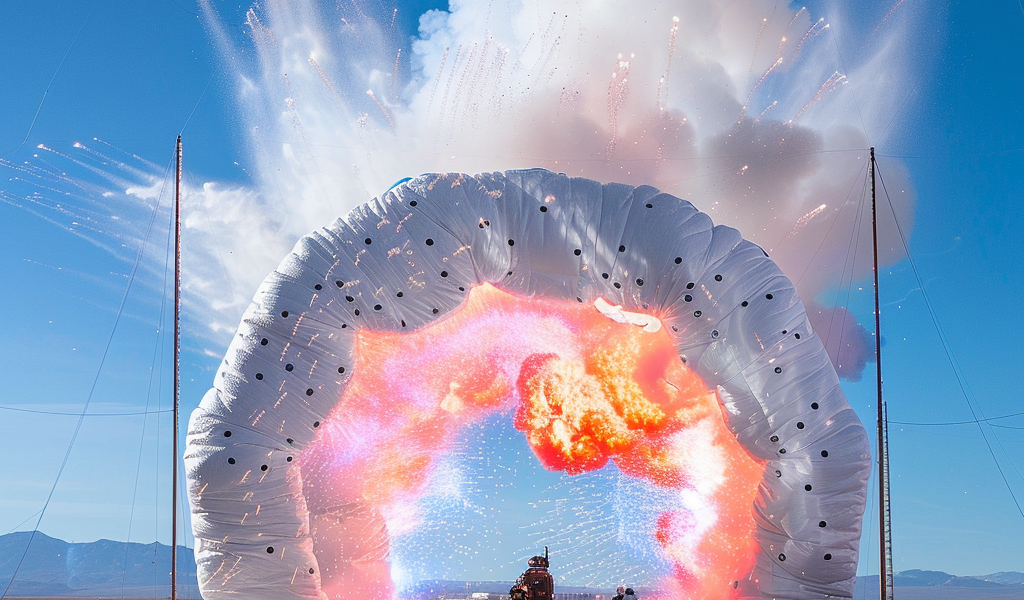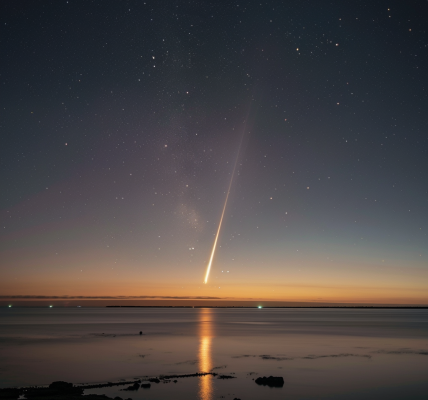Sierra Space Achieves Milestone with Successful Burst Test of Inflatable Space Station Module
Sierra Space, a leading player in the private spaceflight sector, has recently made headlines with the successful completion of a full-scale burst test of its inflatable space station module. This significant milestone, conducted on June 18, 2024, demonstrates the company’s commitment to advancing technology for commercial space stations.
The inflatable module tested stands over 20 feet tall (approximately 6 meters) and is designed to replicate the living conditions of a typical family home. With a volume of 10,600 cubic feet (300 cubic meters), the module can accommodate four astronauts along with necessary exercise and scientific equipment, making it a vital component of Sierra Space’s plans for the Orbital Reef project.
Orbital Reef is envisioned as a commercial space station that will serve as a successor to the International Space Station (ISS) once it is decommissioned post-2030. In collaboration with Blue Origin, Sierra Space aims to create a facility that not only supports scientific research but also fosters commercial activities in low Earth orbit (LEO).
Tom Vice, CEO of Sierra Space, emphasized the importance of this initiative in maintaining U.S. leadership in space. He stated, “We are 100 percent committed to maintaining U.S. leadership in Low Earth Orbit. Sierra Space is leading the way with the first commercial space station to replace the International Space Station when it is decommissioned and ensure there is no gap in LEO.” This underscores the strategic vision behind the development of inflatable space station technology.
During the burst test, the inflatable module was subjected to extreme conditions, and the results showed that the safety levels achieved were approximately four times higher than the minimum requirements set by NASA. This follows a previous successful test conducted in December, which also exceeded NASA’s recommended safety factors for operational pressure.
The innovative design of Sierra Space’s inflatable modules represents a significant advancement in space station technology. By utilizing expandable structures, the company aims to enhance the economic viability of space operations. Vice noted, “Our revolutionary, expandable space station technology reinvents the space station. Our technology, for the first time, will enable the right unit economics that will usher in the full commercialization of space.” This approach not only aims to lower costs but also to stimulate innovation in various industries.
Sierra Space envisions its inflatable modules serving as factories of the future, where biotech and industrial partners can develop new products that could transform markets on Earth. The potential for these modules to support a wide range of activities—from research and manufacturing to tourism—could lead to a new era of commercial space exploration.
The recent burst test is a crucial step in the ongoing development of the Orbital Reef project, which aims to establish a sustainable human presence in space. As the world looks forward to the next phase of space exploration, Sierra Space’s advancements in inflatable technology could pave the way for new opportunities in low Earth orbit, enabling a vibrant ecosystem for scientific discovery and commercial enterprise.
As the space industry continues to evolve, Sierra Space’s efforts to create a commercial space station reflect a broader trend towards privatization in space exploration. The successful testing of its inflatable module is a testament to the company’s dedication to innovation and safety, positioning it as a key player in the future of space travel.
With the ISS set to be decommissioned in the coming years, the urgency to develop alternative platforms for research and commercial activities in space has never been greater. Sierra Space’s inflatable modules represent a forward-thinking solution to this challenge, promising to deliver a flexible and efficient approach to space habitation.
As the company continues to refine its technology and conduct further tests, the space community eagerly anticipates the impact of these developments on the future of human activity in orbit. The successful burst tests not only validate the safety and feasibility of Sierra Space’s designs but also inspire confidence in the potential for commercial space stations to thrive in the coming decades.





